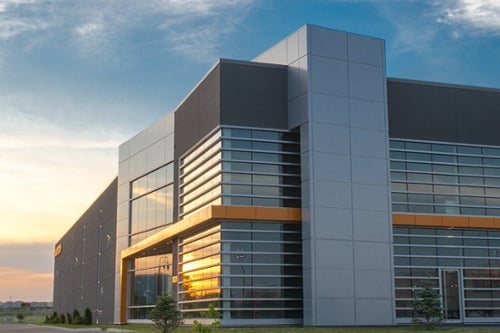Warehouse operations are a critical component of any supply chain. Still, as the velocity of the movement of goods slows down, maintaining the same efficiency and profitability can be challenging, leading to a buildup of inventory, increased costs, and decreased efficiency.
Many companies are choosing to downsize their warehouse operations to cut costs and optimize productivity. Managing a warehouse during slow seasons can be difficult, but you can do it successfully with the right strategies and techniques.
Before diving into specific practical tips, one must understand why warehouse operations may slow down. The most common reasons for a slowdown include the following:
- A decrease in demand for products. For example, a company that primarily sells seasonal products may experience a slow period during the off-season when demand for those products decreases.
- A shift in consumer trends. For example, suppose a company primarily sells products that are becoming less popular. It can become challenging to maintain productivity and efficiency in the warehouse.
- A change in the company’s business model. For example, if a company decides to shift from a brick-and-mortar model to an e-commerce model.
In all three cases, it would be necessary to downsize warehouse operations to reduce costs and ensure that the company is spending on warehouse expenses effectively. In this article, we will explore several strategies to help you reduce your warehouse operations to save money and increase efficiency when your velocity slows down.

1- Streamline your warehouse processes
When demand slows down, warehouses may find themselves with less work to do and fewer employees needed to complete that work. Streamlining warehouse processes can help with downsizing warehouse operations during slow periods.
Streamlining processes means identifying areas where processes can be simplified, automated, or outsourced. It also includes identifying and eliminating unnecessary steps, duplicated efforts, and inefficiencies in warehouse operations.
One way to streamline processes is by reviewing current procedures and policies, including analyzing the flow of goods, identifying bottlenecks, and finding ways to eliminate them. You can also standardize your warehouse methods to ensure that all your employees follow the same. It will help minimize errors, improve efficiency, and reduce training time and costs.
Another way to streamline processes is to review and optimize the warehouse layout by increasing storage capacity. For example, you can implement new storage systems and optimize picking and packing processes.
Finally, it is essential to monitor and measure the performance of your warehouse operations. You can identify areas where improvements can be made and adjust accordingly by tracking key performance indicators (KPIs) such as inventory turnover, on-time delivery, and order accuracy.
By streamlining warehouse processes, you can improve overall efficiency, optimize warehouse layout and workflows, reduce costs, and maintain a good level of productivity.
2- Consolidate your warehouse space
One of the most critical steps in downsizing your warehouse operations during slow seasons is re-evaluating your space needs. You should look at the layout of the warehouse, identify areas where space is wasted, and determine what areas can be consolidated.
By reorganizing the warehouse and consolidating space, you can free up valuable square footage that can be used for other purposes and be more efficient. It could include creating a dedicated area for packing and shipping and reducing the space you need to operate in to lower your costs.
You can rearrange your warehouse layout during slow periods to make it more efficient by placing the most frequently used products closer to the loading docks. When velocity slows down, it may not be necessary to always have easy access to every pallet. It can help reduce the amount of time that employees spend walking around the warehouse, which can save money on labor costs.
Another way to consolidate your warehouse space is to optimize the use of your pallet rack systems. For example, consider implementing a vertical storage system like mezzanine floors or multi-level racks. It can not only save space without sacrificing capacity but also increase the efficiency of warehouse operations.
Additionally, consider whether it makes sense to:
- Consolidate multiple warehouses into one larger facility,
- Rent out excess space to other businesses,
- Lease smaller warehouse space, or
- Store inventory off-site.
Also, regularly review and assess your warehouse layout and organization to identify areas for improvement. Not only will this reduce your overhead costs, but it will also make it easier to manage your inventory.
3- Implement a rack relocation program
Another effective way to downsize warehouse operations when velocity slows down is to relocate your pallet racks. A relocation program involves rearranging the racking and shelving units in different warehouse areas more efficiently. It will free up space and make it easier for your employees to navigate the warehouse, increasing efficiency.
During slow seasons, you can store less inventory in the warehouse, so you may no longer need some of the storage racks. Moving these unused racks to a different area of the warehouse or even a different location can provide and free up space for other uses. It can help reduce costs associated with maintaining and operating the warehouse during slow seasons.
To eliminate long aisles or large open areas not used to their full potential, move your racks closer together or rearrange them in a different configuration. This way, you will reduce the space needed to store the same quantity of products. By moving racks to areas more easily accessible, it can allow for more efficient use of space and improve the speed and efficiency of product retrieval.
If you are thinking of changing your pallet rack configuration, your first step should be to consult a racking specialist. This expert will assess what changes you need to make and how to implement them safely and efficiently.
4- Optimize your inventory
As your warehouse operations slow down, it is necessary to have a clear understanding of your inventory. You should conduct a thorough regular inventory audit.
Take a close look at the products you have on hand and identify which are in high demand, slow-moving, and no longer needed. Understanding your inventory helps you decide which products to keep in stock.
If you’re experiencing a slow period, you may need to reduce the amount of inventory you’re holding. Once you’ve identified the excess merchandise taking up valuable space, you need to plan how to dispose of it. You can either:
- Reduce your inventory levels (for example, by selling it off at a discounted rate or slowing down production).
- Find ways to repurpose it.
- Remove it from your inventory altogether.
Remember that excess inventory is another significant contributor to increased warehouse operations. When velocity slows down, it’s essential to reduce the amount of excess inventory that you have on hand. Doing so will free up valuable space in your warehouse and reduce the amount of money you spend on restocking, storing, or organizing these items.
You can also implement a comprehensive inventory management system to track stock levels, monitor sales trends, and optimize purchasing decisions. This program can reduce carrying costs, improve your bottom line, and increase efficiency.
5- Integrate technology solutions
Technology can also be critical in downsizing your warehouse operations when velocity slows down. Investing in warehouse management systems, barcode scanners, and other automated solutions can help you track inventory, optimize picking routes, and automate processes.
For example, you could implement a radio-frequency identification (RFID) tracking system. It would allow you to scan and catalog items, even when you don’t know on which pallet they are. You could also place RFID readers at your warehouse’s entrances and exits, allowing real-time inventory tracking. This way, you can track items when transporters deliver them to your facility and your workers ship them elsewhere.
Another way you can optimize the use of technology is to automate as much of the process as possible, increasing the speed and accuracy of your operations. You can use many different technologies to automate warehouse operations. For example, implement automated equipment (i.e., robotic pickers, conveyors, and automated storage and retrieval systems) and computerized inventory management, order fulfillment, and shipping procedures.
Automated systems can streamline operations, leading to significant cost savings and improved efficiency. Additionally, by implementing real-time inventory tracking, it is possible to quickly identify when products are running low and reorder them as needed or when items are obsolete.
Since warehouse mistakes can be costly, Internet of Things (IoT) sensors can help reduce errors and increase processing speeds and overall warehouse efficiency. These sensors monitor the movement and use of items inside your warehouse and communicate real-time inventory information from shelves to your automated management system. Intelligent warehouse management eliminates costly and time-wasting errors by ensuring that stock levels and equipment locations are clearly known and constantly monitored.
Always stay updated on new technologies and trends in warehouse management, such as automation, RFID, and IoT systems, and consider how they can be applied.

6- Establish a safety program
An effective safety program can also help with downsizing warehouse operations during slow periods. Warehouse employees working in a safe environment reduce the risk of costly accidents, injuries, and compensation claims. When you minimize your warehouse operations, workers may be required to work in unfamiliar areas or with new equipment, which can increase the risk of accidents. A comprehensive safety program can help mitigate these risks by providing training and guidelines for safe work practices.
It would be best to offer regular training to your employees on the proper use and maintenance of equipment, proper lifting techniques, and emergency procedures. When employees know the correct practices and the equipment is in good working condition, it minimizes downtime and errors and thus increases productivity.
By prioritizing the well-being of employees, you help in employee retention and morale by making sure that employees feel safe and valued. You also reduce the risk of accidents and injuries, increase productivity, and lead to compliance with OSHA safety regulations, helping to avoid penalties and fines.
7- Train your employees
Employee training is another essential strategy when downsizing your warehouse operations. By training your employees on new technologies and processes, you can help them work more efficiently. Additionally, you can help your employees adapt to new roles as your warehouse operations change by providing them with the necessary skills and knowledge.
By training your employees on multiple tasks, you can ensure that you have a skilled workforce that can handle different functions during slow periods. Cross-training your employees helps ensure that your warehouse is staffed during slow seasons and reduces the need for temporary employees. It can result in increased productivity in the warehouse and significant cost savings.
Regularly conduct performance reviews and metrics to assess employee productivity and identify areas for training and development. Foster a positive and engaged team culture by recognizing and rewarding good performance, encouraging collaboration and teamwork, and providing opportunities for growth and development.
ARE YOU THINKING OF CHANGING YOUR PALLET RACK CONFIGURATION?
CONSULT A RACK SPECIALIST TO ASSESS ANY NECESSARY CHANGES
AND HOW TO IMPLEMENT THEM SAFELY AND EFFICIENTLY.
8- Enhance your methods of communication
Communication is also critical when downsizing your warehouse operations. By informing your employees about the changes to warehouse operations, you can help them understand the reasons behind the downsizing and how it will impact their roles.
Involving employees in the process ensures that everyone is on the same page. It is possible to gain valuable insights into improving warehouse operations and making them more efficient. Establish clear and effective communication channels with all warehouse staff, including team leaders and supervisors, to ensure a smooth flow of information and coordination.
Also, streamline communication and collaboration between different teams within your warehouse to improve efficiency. For example, set up regular meetings to discuss and resolve issues, which can help reduce delays and improve the flow of goods.
Additionally, by communicating with your customers and suppliers, you can ensure that your warehouse operations run smoothly during slow seasons. By keeping your customers informed about your inventory levels, lead times, and delivery schedules, you can help them plan for their slow seasons.
9- Invest in temporary storage solutions
Temporary storage solutions can help downsize operations by providing a flexible and cost-effective way to store excess inventory or products that are not currently in high demand.
When the demand for products slows down, you may have excess inventory that you don’t have room to store. Temporary storage solutions, such as rental storage containers or mobile storage units, allow the warehouse to downsize its operations. You can use these solutions to keep the excess inventory and reduce the amount of permanent storage space to maintain.
Also, temporary storage solutions can be moved to different locations or removed entirely when product demand picks up again. This flexibility allows you to easily adjust your storage needs based on changes in product demand, making it a cost-effective solution for downsizing during slow seasons.
10- Invest in temporary storage solutions
Outsourcing certain aspects of your operations can also be an effective strategy for downsizing.
One of the most effective ways to outsource is using third-party logistics providers (3PLs). These companies specialize in managing and operating warehouses and can provide inventory management, order fulfillment, and transportation.
Another way to outsource warehouse operations is to employ dropshipping. You do not hold any inventory but rely on the supplier to ship your products directly to the customers. You can also outsource your operations by using storage and distribution centers. They provide storage space and can also handle order fulfillment and transportation.
Outsourcing can be a powerful tool for downsizing warehouse operations during slow seasons. You can rely on the expertise of specialized companies and save money as you don’t have to invest in the infrastructure and resources required to run a large warehouse.
You can then still maintain efficient warehouse operations. However, it’s essential to evaluate the potential risks and benefits before deciding and to have clear communication and understanding with the outsourcing partner.

KEY TAKEAWAYS
In conclusion, downsizing warehouse operations when velocity slows down can be challenging, but with the right approach, you can reduce costs and improve efficiency. Remember the following practical tips to stay on top of any issues or inefficiencies that arise and ensure that your operations are running smoothly and efficiently.
- Analyze and reduce excess inventory.
- Evaluate your space needs.
- Think of relocating your racking systems.
- Install temporary storage solutions.
- Streamline your warehouse processes.
- Implement effective safety measures.
- Train your employees and involve them in the process.
- Communicate changes effectively to your employees, customers, and suppliers.
- Outsource some of your warehouse activities.
- Invest in technologies and stay up to date with trends in warehouse management.
Reducing warehouse operations during slow seasons is essential for any business. Implementing the strategies discussed in this blog post can reduce overhead costs, improve your bottom line, and streamline your warehouse operations.
Thanks to a strategic and systematic approach to downsizing your warehouse operations, your business can remain competitive, productive, and profitable even when velocity slows down.











